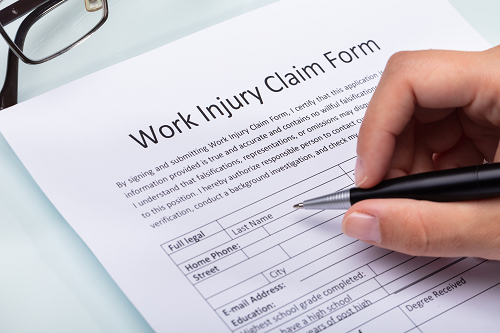WEDNESDAY, MAY 11, 2022
Ergonomics is the science of optimizing an environment for maximum safety and efficiency. In the workplace, emphasizing ergonomics will not only improve your bottom line and boost employee satisfaction, but it will also reduce the number of workers’ compensation insurance claims made as a result of improving safety. Below, we outline several key tips for improving your workplace’s ergonomics.
Tips for Improving Workplace Ergonomics
1. Identify the challenges you face.
Start by narrowing your scope. While numerous ergonomic improvements may be beneficial, you want to focus on the major problem areas first. How do most of your workers’ comp claims occur? How do most injuries occur in general? Are back injuries common? What about slips and falls? Are you at risk of exposure to harmful environments or substances? It’s best to isolate the biggest problems first. 
2. Conduct risk assessment.
Starting with the most severe risks and working your way down the list, conduct a thorough risk assessment to determine what solutions could amend (or at least improve) each situation.
One great way to do this is to ask your employees directly: What ergonomic changes could benefit you and make the work environment safer and more efficient? You can request this information in person, in a formal meeting, or with a survey that employees can fill out at their leisure.
3. Implement changes.
It’s possible not all of the improvements you note will be possible right away. That’s okay. Start with the most glaring changes that can be implemented the most rapidly. As soon as you start making improvements to ergonomics, you should start to see a reduction in absences, workplace injuries, and workers’ comp claims.
4. Cultivate a strong safety culture within your workplace.
It’s important that your workplace cultivate a proactive safety culture. This means making your employees aware that you care about their safety and the related ergonomics of how your business operates.
Start by holding regular safety seminars. Incentivize attendance any way you can. Additionally, post safety information on the walls, in break rooms, in bathrooms, and elsewhere. Hand out safety flyers, and send memos if you need to. Finally, create an easy way for employees to make comments or suggestions to you about workplace safety and efficiency. Take these comments and suggestions seriously.
Although improving ergonomics may not have been at the top of your list in terms of reducing workers’ compensation insurance claims, as you can see, it can certainly make an impactful difference to employee satisfaction, workplace safety, and overall insurance costs.
No Comments
Post a Comment |
|
Required
|
|
Required (Not Displayed)
|
|
Required
|
All comments are moderated and stripped of HTML.
|
|
|
|
|
|
NOTICE: This blog and website are made available by the publisher for educational and informational purposes only.
It is not be used as a substitute for competent insurance, legal, or tax advice from a licensed professional
in your state. By using this blog site you understand that there is no broker client relationship between
you and the blog and website publisher.
|
Blog Archive
2023
2022
2021
2020
2019
2018
2017
2016
2015
2014
2013
2012
2011
2010
|
|